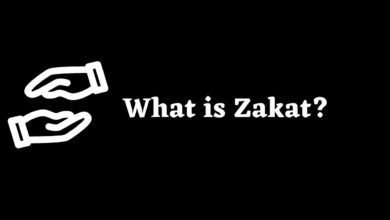Metaphors and Symbols in Surah Al-Waqiah
Unveiling the Symbolic Tapestry: Decoding Hidden Meanings in Surah Al-Waqiah

Introduction:
The Quran, the holy book of Islam, is a profound and complex scripture that holds a wealth of wisdom and guidance for its followers. Within its verses, metaphors and symbols are often used to convey deep spiritual and moral messages. Surah Al-Waqiah is one such chapter that captivates readers with its metaphoric language and hidden meanings. In this article, we will delve into the exploration of metaphors and symbols within Surah Al-Waqiah, unveiling the layers of significance that lie beneath its poetic surface.
The Essence of Surah Al-Waqiah:
Surah Al-Waqiah, also known as “The Event” or “The Inevitable,” is the 56th chapter of the Quran. It is a powerful discourse that speaks about the Day of Judgment, highlighting the stark contrast between the righteous and the wicked, and the consequences each will face. Metaphors and symbols within this chapter enhance its depth and invite readers to reflect upon their own lives and actions.
Symbolism of Trees and Gardens:
Surah Al-Waqiah employs vivid imagery of lush gardens and abundant trees as symbols of the rewards awaiting the righteous in the hereafter. These symbols serve to remind believers of the eternal blessings that await them if they remain steadfast in their faith and deeds. The metaphorical representation of gardens and trees instills hope and motivates individuals to strive for righteousness, knowing that their efforts will bear fruit in the afterlife.
The Symbolic Significance of the Food:
In Surah Al-Waqiah, the mention of food plays a significant role in conveying the concept of accountability and the consequences of one’s actions. The chapter describes the food of the righteous as “thornless lote trees, and clustered plantains, and spreading shade, and water gushing, and abundant fruits, neither limited nor forbidden.” This imagery emphasizes the abundance and purity of the rewards for the righteous. Conversely, the mention of the food of the wicked as “dari, and a bitter Tree, and a Shade, which does not shade” signifies their deprivation and suffering. These metaphors provide a vivid picture of the contrasting outcomes and serve as a powerful reminder of the importance of leading a righteous life.
Metaphors of the Night and the Day:
Another powerful metaphor used in Surah Al-Waqiah is the contrast between the night and the day. The night symbolizes hardships, trials, and uncertainties faced by individuals, while the day represents clarity, guidance, and blessings. This metaphor signifies the cyclical nature of life and serves as a reminder that no matter how challenging the night may be, the day will inevitably come. The night and day metaphor urges believers to remain patient and steadfast during difficult times, knowing that relief and blessings are bound to follow.
Symbolism of the Pen and the Written Record:
The mention of the pen and the written record in Surah Al-Waqiah symbolizes accountability and the recording of one’s actions. It emphasizes the concept of divine knowledge encompassing every aspect of human life. This symbolism serves as a reminder that our actions are not forgotten and that we will be held accountable for our deeds. The metaphorical significance of the pen and the written record urges individuals to be mindful of their actions and to strive for righteousness in every aspect of their lives.
Conclusion:
Surah Al-Waqiah is a chapter of the Quran that captivates readers with its metaphoric language and profound symbolism. It delves into the concept of the Day of Judgment and the contrasting outcomes for the righteous and the wicked. The metaphors and symbols within the Surah serve to deepen our understanding of spiritual truths, urging us to reflect upon our actions and strive for righteousness. Through the use of imagery such as trees, gardens, food, night and day, and the pen and the written record, Surah Al-Waqiah unlocks hidden meanings that resonate with believers on a profound level. By exploring these metaphors and symbols, we can gain deeper insights into the moral and spiritual lessons contained within the Quran, leading us towards a path of enlightenment and self-improvement.





